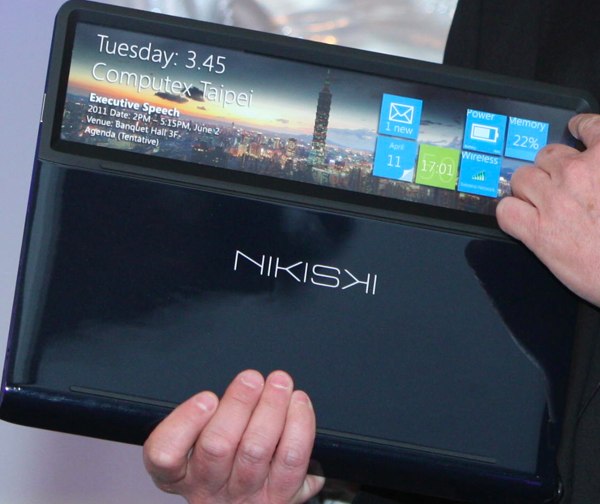Though there was brief mention of the upcoming Ivy Bridge CPU line-up, Intel's primary focus at this year's CES press conference was on the Intel trademarked 'Ultrabook'. For clarity, the Ultrabook specification requires that any device going by such a name must be less than 20mm thick, under 1.4KG in weight, have a minimum of five hours battery life and utilise a 17W CULV Sandybridge CPU. Requirements in the second half of the year adjust these specifications to feature Ivy Bridge, USB 3.0 and PCI Express 3.0 with a look to further power-saving requirements in 2013.
Intel took the opportunity to demonstrate where it felt Ultrabook technology could head in the future and it seemed very much towards tablet-like concepts. At the press conference, Ultrabooks with accelerometers were previewed and despite vice president and general manager of Intel's PC group, Mooly Eden's best efforts, the technology felt a little awkward with a whopping great keyboard in the way.
However, Intel didn't stop there, and demonstrated Ultrabooks featuring touch-screens and more impressively, Kinect-like gesture/voice control and hands-free gaming. The gesture control certainly appeared fun, with the demonstration involving the firing of a slingshot, no doubt the concept will have some very interesting uses; it may seem odd to include a touch-screen when a mouse and keyboard are already present, however drawing from experience, this writer often found himself wondering why his laptop wouldn't respond to touch after owning a Windows Mobile 5 smartphone and has also found himself using the touch-screen more often than not on the Asus Transformer tablet, despite the keyboard and mouse dock; certainly for some uses, touch-screen is more intuitive and when Intel showed this on Ultrabooks sporting Windows 8, with the touch-friendly Metro UI, it felt like Intel hadn't missed the mark.

Mooly's final demonstration was a functional concept he called 'Nikiski', an Ultrabook featuring a transparent mouse-pad spanning the width of the device, when closed, the pad made it possible to continue to view the top-third of the device's screen, with the pad acting as a touch-screen interface, enabling the user to view and interact with a custom Metro UI app for quick access to social media and important information without the need to open up the Ultrabook. Though in the early stages, regardless of how useful the technology proves to be, it's certainly an impressive concept, with the overall theme of the event clearly focusing on cramming as many features as possible into the super, or rather 'ultra' thin devices to offer maximum choice in how to enjoy and appreciate the user experience.
Hopefully our CES floor-team will be able to bring us more on the latest Ultrabooks over the next few days.














